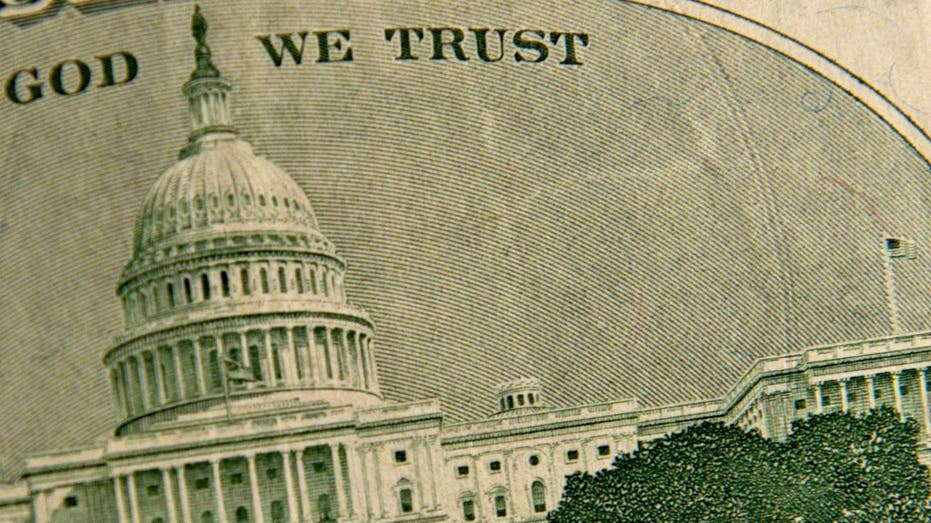US national debt interest exceeds defense spending: CBO
The CBO found that the rapid rise in interest expenses caused the cost of servicing the debt to eclipse military spending
US increasing deficits acts as a massive crowding out effect: Jake Oubina
Piper Sandler managing director and senior economist Jake Oubina outlines his concerns with the rising U.S. deficit and previews upcoming economic data on ‘Mornings with Maria.’
The latest budget update from the nonpartisan Congressional Budget Office (CBO) found that the federal government has spent more on paying interest on the national debt than on the military in fiscal year 2024.
The CBO's budget report for March showed that the U.S. has spent $412 billion on military programs at the Department of Defense through the first half of FY2024, according to preliminary figures from CBO and the Treasury Department.
That represents an increase of $26 billion, or 8%, from the amount spent in the March through October period last year, but it has been surpassed by the rapidly growing cost of servicing the national debt.
Interest expenses incurred from the more than $34 trillion national debt totaled $440 billion in the first six months of FY2024 – an increase of $133 billion, or 43%, from the first half of FY2023.
US NATIONAL DEBT TRACKER FOR APRIL 9, 2024: SEE WHAT AMERICAN TAXPAYERS (YOU) OWE IN REAL TIME

Federal spending on interest expenses has surpassed defense spending, according to the CBO. (KAREN BLEIER/AFP via Getty Images / Getty Images)
Those figures largely track with the CBO's projections for FY2024 that were compiled as part of its 10-year budget outlook.
That report, which was released in February, projected interest expenses would rise to $870 billion in FY2024 – up from $659 billion the year before – whereas defense spending would rise to $822 billion from $805 billion in FY2023.
The dramatic increase in the cost of servicing the debt is due to higher interest rates brought about by the Federal Reserve's fight against inflation.
HEDGE FUND BILLIONAIRE SAYS US DEBT 'IS A GROWING CONCERN THAT CANNOT BE OVERLOOKED'

Defense spending is projected to rise by $17 billion to $822 billion in FY2024. (Petty Officer 2nd Class Dusty Howell/U.S. Navy via Getty Images / Getty Images)
Fed policymakers hiked rates to their highest level in two decades, with the benchmark federal funds rate currently sitting at a range of 5.25% to 5.5%.
Those rate hikes followed inflation reaching a 40-year high of 9.1% year-over-year in June 2022, which declined to 3.2% as of February 2024 – an amount that remains elevated above the Fed's 2% target rate.
Officials have held rates high to get inflation back to target, though they have said they will consider incoming economic data and cut rates if inflationary pressures ease, which would help ease budgetary pressures caused by high interest rates on the cost of servicing the debt.
DANGER AHEAD: CBO SAYS DEBT WILL CONSUME 166% OF GDP IN 30 YEARS

The cost of servicing the national debt is projected to rise by $211 billion to $870 billion in FY2024. (Photographer: Stefani Reynolds/Bloomberg via Getty Images / Getty Images)
In terms of the overall budget, the CBO found that the federal government spent $3.252 trillion and took in $2.188 trillion in tax revenue in the first half of FY2024, resulting in a $1.064 trillion deficit.
While that budget deficit is about $37 billion smaller than what was incurred during the same period a year ago, when accounting for shifts in the timing of particular expenditures – like those delayed by weekends or holidays – it found that the deficit was about $46 billion larger.
The CBO projects that the full-year FY2024 budget deficit will total $1.5 trillion, a decrease from the $1.7 trillion deficit in FY2023 that ranked as the third-largest in U.S. history.
GET FOX BUSINESS ON THE GO BY CLICKING HERE
Last year's $1.7 trillion deficit trailed only the $3.1 trillion FY2020 deficit and $2.7 trillion FY2021 deficit that were incurred at the peak of spending on COVID pandemic relief programs.
